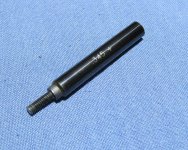swca_none
swhf_none
nra_none
active_none
leo_none
Mr.Gato
Member
Any members in the NH seacoast or SE Maine area have a .44 range rod they'd be willing to lend for a day or so? I'd like to check the cylinder alignment on a 24-3 I just acquired. Brownell's sells them for 60ish bucks, but I can't see needing it again in the near future so borrowing one would be ideal.
Thanks!
Thanks!

